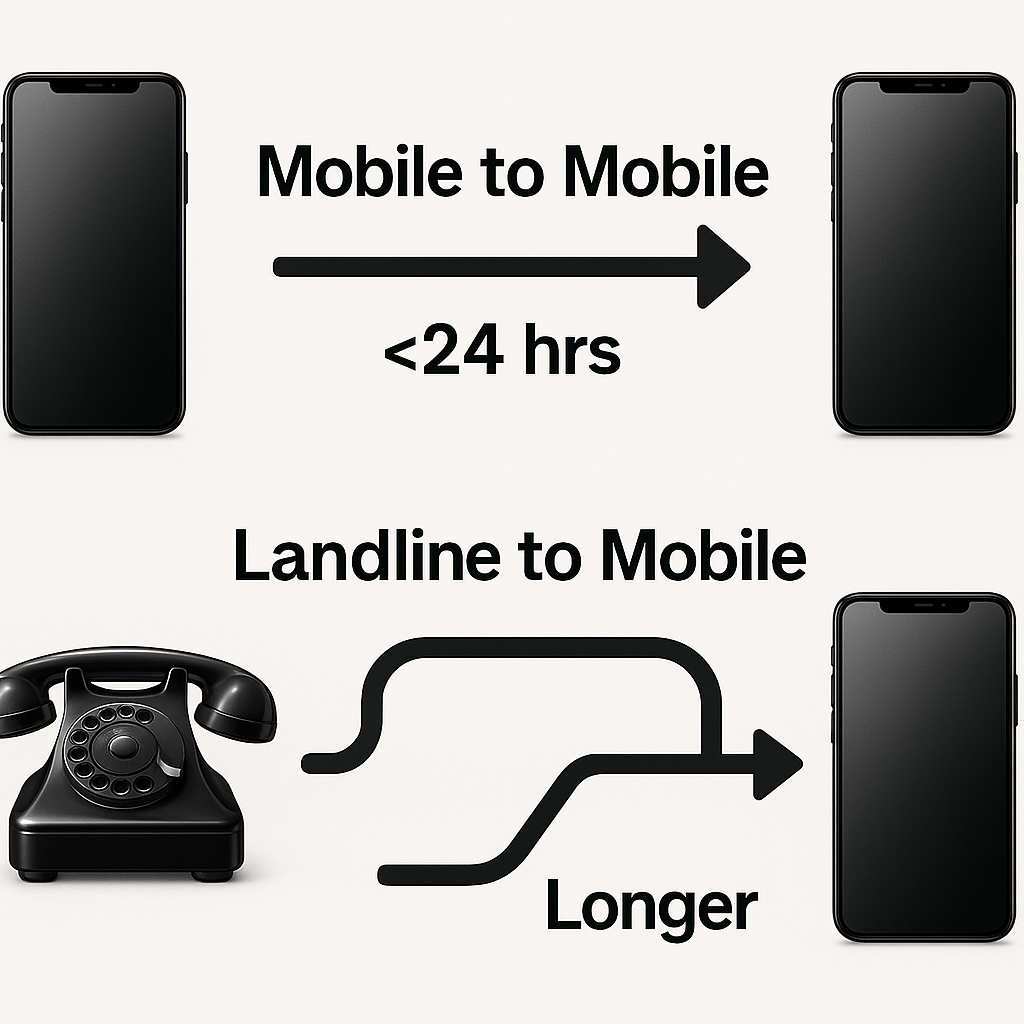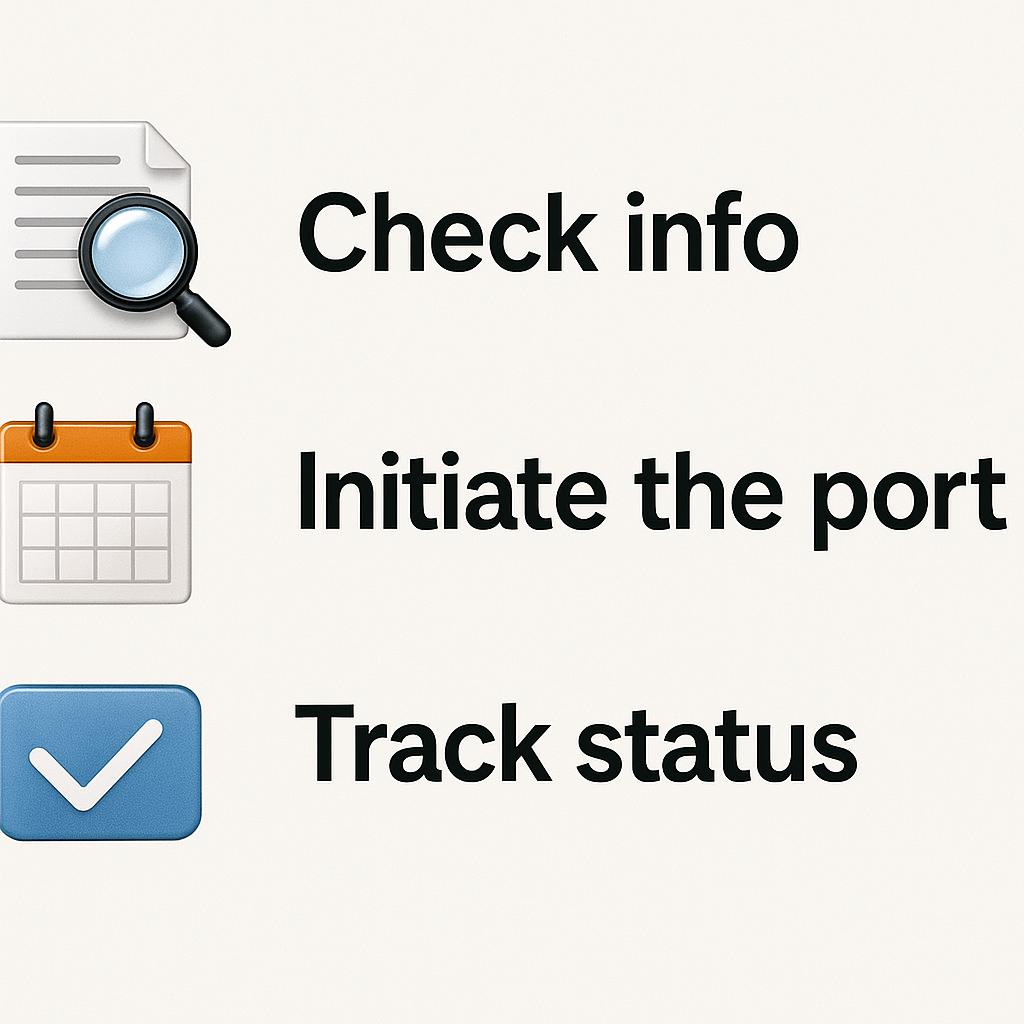Porting a mobile phone number to a new carrier is usually quite fast, often taking anywhere from a few minutes to a single business day. However, if you are moving a landline or a VoIP number, the process is more complex and you should expect it to take several days. The exact timeline depends on the type of number and the providers involved.
Keeping your phone number is important. It’s connected to your friends, family, work, and countless online accounts. The thought of switching to a new phone carrier can be exciting, but the fear of losing your number can make anyone hesitate. Thankfully, you have the right to keep your number through a process known as "number porting." Let’s walk through this process together to make your switch as smooth as possible.
Understanding the Basics of Porting Your Phone Number
At its core, porting is simply moving your existing phone number from your old provider to your new one. The Federal Communications Commission (FCC) established rules that require companies to comply with your request to keep your number, as long as you remain in the same geographic area. Think of your phone number not as the carrier's property, but as your own personal identifier that you can take with you. This process involves a digital handshake between your old and new carriers to transfer control.
So, How Long Does It Really Take to Port a Number?
While many mobile to hvac mobile ports are completed surprisingly quickly, it's wise to set realistic expectations. A standard simple port between two mobile carriers should be processed within one business day, according to FCC guidelines. This is the ideal scenario, but several factors can influence the actual time it takes.
The complexity of the port plays the biggest role. If you are moving a number from a landline or a Voice over IP (VoIP) service, the process is significantly more involved. These types of transfers can easily take anywhere from three to ten business days to complete. The underlying technology and internal processes for these systems are different, requiring more manual checks and coordination.

A Closer Look at Typical Porting Timelines by Provider Type
The type of provider you are leaving and the one you are joining heavily influences the porting duration.
- Switching Between Major Mobile Carriers: When you move your number between major players like AT&T, T-Mobile, and Verizon, the process is generally streamlined. These companies have well established, automated systems, so the transfer can often be completed in under an hour.
- Moving to a Mobile Virtual Network Operator (MVNO): Carriers like Straight Talk or Xfinity Mobile operate on the networks of larger carriers. Porting to an MVNO is usually fast, but can sometimes take slightly longer as the request may pass through an extra layer of administration.
- The Nuances of Porting a Landline or VoIP Number: This is where things slow down considerably. Landline and VoIP systems are built on older or different infrastructure, making the process more manual. A wait of several business days is standard due to these technical dependencies.
"Why Is It Taking So Long to Port My Number?" Uncovering Common Delays
One of the most frustrating experiences is being stuck in limbo. If your port is dragging on, it's almost always due to a specific, identifiable issue.
- Is All Your Information Correct? The Importance of Accuracy: This is the most common reason for a delay. The information you give your new carrier must perfectly match your old carrier's records. This includes your full name, service address, account number, and Number Transfer PIN. A simple typo can halt the entire process.
- Navigating Account and Contractual Obligations: Your old provider will not release your number if your account is not in good standing. An outstanding balance or a feature freeze on your account can cause a delay. Crucially, you must not cancel your old service yourself, as the number has to be active to be ported.
- The Role of Your Old and New Service Providers: The porting process requires a conversation between two competing companies. Sometimes, delays can happen due to system outages, a backlog of requests, or simple human error at either carrier. While they are required to facilitate the transfer, efficiency can vary.

Your Step by Step Checklist for a Smooth Number Porting Experience
You can play an active role in making sure your number transfer happens without a hitch by being prepared.
1. Gathering the Necessary Documents and Information: Before you start, get a recent phone bill from your current provider to find your account number. You will also need your security PIN or a specific Number Transfer PIN. Call your provider if you can't find this information.
2. The Right Way to Initiate the Porting Request: With your information ready, contact your chosen new provider. They will submit the porting request on your behalf. Remember, do not cancel your existing service yourself. The successful port automatically terminates your old service.
3. Keeping Tabs on Your Porting Status: Your new carrier should offer a way to track your porting progress, perhaps through an online portal or text updates. If you don't receive an update within 24 hours for a mobile port, it is a good idea to follow up with them.
Transferring Your Phone Number to a New iPhone or Android Device
Many people transfer phone number to new iphone or Android when they switch carriers. It's helpful to know these are two separate actions that happen together. The number porting is about your service, while setting up your new device is about the hardware. Your new phone might get a temporary number first, which will be replaced by your old number once the port is complete.

Frequently Asked Questions
1. Can I use my phone while my number is being ported?
Yes, you can. Your old phone and service will continue to work normally until the moment the port is finalized. At that point, your old phone will lose service, and your new phone with your new provider will become active with your number.
2. What should I do if my number port is rejected?
Your new carrier will notify you and provide a reason, which is usually mismatched information. You will need to contact your old carrier to verify your account details and then resubmit the corrected information to your new carrier to try again.
3. Will I lose my voicemails and messages when I port my number?
Yes, this is very likely. Voicemails are stored on your carrier's network, not on your phone itself. You will lose access when you switch. Be sure to listen to and save any important voicemails before you initiate the porting process.
4. Is it possible to port a number that is not currently active?
No, this is not possible. For the porting request to be successful, the phone number must be active with your current provider. If you have already canceled your service, you will likely need to reactivate it before you can port the number out.
5. How can I find my account number and PIN for porting?
Your account number is always printed on your monthly bill. Your Number Transfer PIN is a more recent security measure. You may need to specifically request it from your current carrier by logging into your online account or calling their customer service line.
Once your number is ported, use SuperU to instantly clean up and organize all your contacts for a fresh start.
Start for Free – Create Your First Voice Agent in Minutes


